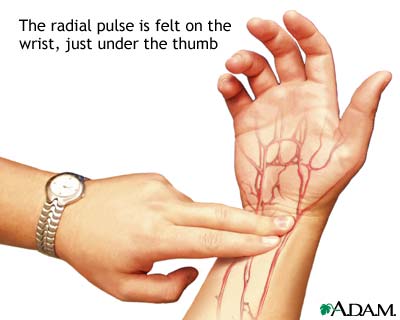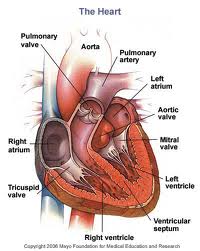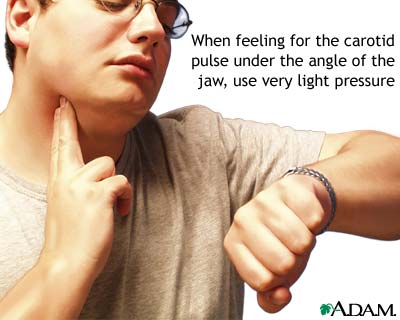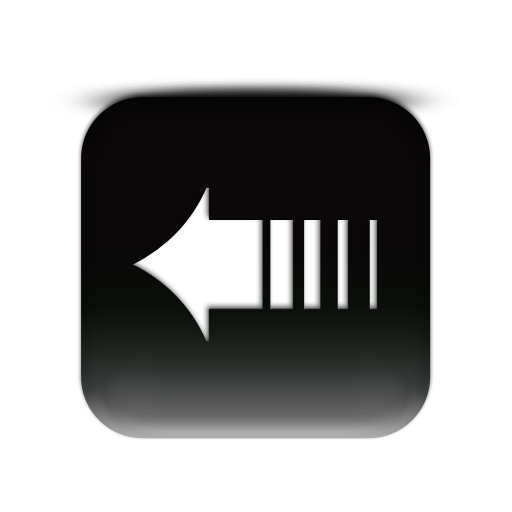If you've found this website helpful, please click the Donate button. Thanks for the support.
Fitness Articles
Like the site? Sign up for the FREE newsletter. I'll send a new article once or twice a month. Unsubscribe
anytime.
anytime.
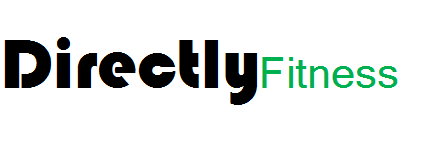
About this Site l Contact l Free Newsletter l Subscribe to RSS Feed
Recommended Products l Fitness Store l Directly Fitness Blog
Recommended Products l Fitness Store l Directly Fitness Blog
Continue to learn more about your heart: Fitness Articles Home
By:Alex Borja
Many train to improve their image but don't often take into account the impact training will have on their heart. Many don't consider the heart a muscle—but it is! It is a very important muscle as this article will discuss. It is what determines how hard and fast you can work out. Train to improve your heart and you will succeed in other areas of fitness as well. Below I will explain what your heart does, how it improves, ways to calculate your heart rate, and how to apply this to your fitness regimen.
About your heart
Your heart is a powerful muscle that lies almost exactly in the middle of your chest and tipped at an angle. The "base" of the heart is located near the top while the "apex" is located at the bottom point. It has four chambers within it called atria and ventricles. The atria are the top two chambers and the ventricles are the bottom two.
The heart works to supply blood to your body by working as a pump. It takes deoxygenated from your blood via your veins that return blood from the heart after your body uses the oxygen. Once reaching the heart the blood is pumped out to the lungs. Here the blood becomes oxygen rich by the air we breathe in. After becoming oxygenated it re-enters the heart, supplies the heart, and is shot out to the rest of your body. Then the cycle starts all over again.
Many know that the heart contracts or "beats" but
many more won't understand why or how this happens.
When your heart contracts this is known as "systole"
and this is when your blood is pumped out of your heart.
Immediately after is "diastole" or the period when
your heart is relaxed and refilling with new blood
before pumping again.
Think of squeezing your hand into a fist when your
in the swimming pool. Water will squirt out and this
is representative of systole. Now relax your hand and
water will flow into your relaxed fist. This is somewhat
how systole and diastole are performed in a controlled
manner within the heart. This is how we get
measurements of blood pressure and heart rates which
will be discussed
shortly.
Your heat is controlled by your autonomous nervous system meaning that you
cannot control it. There are two main components of this
system called sympathetic and parasympathetic nervous systems.
Increase in the sympathetic nervous system has an excitatory effect on your heart. It increases your heart rate (HR), dilates your pupils, and causes a mix of hormones to give you that "rush" feeling. For example, when you work out, your sympathetic system is active.
Parasympathetic control effects are the opposite of sympathetic, leading to relaxed heart rates and monitors your every day body control. Think of parasympathetic being a regulatory system to monitor your heart rate when you are not excited.
Training and your heart
The basic idea with strengthening your heart is that your heart will adapt with constant stress. This can be the stress of everyday life or during exercise. Stress coming from external factors such as work or your home life can increase your heart rate causing long term damage. When you get stressed your heart rate increases and having it too high for too long can lead to many problems down the road. It is important to cause "controlled" stress to the heart through exercise and not chornic "uncontrolled" stress such as being late for work..
A healthy heart will beat with a fairly constant rhythm although irregular beats are common. I should note however that if you are experiencing irregular heartbeats quite frequently that you should at least check it out with your doctor. A healthier heart will have what's called a high "stroke volume". Stroke volume is the amount of blood being pumped out with each beat. You want a high stroke volume so your heart won't have to work as hard. In this way you get more bang for your buck as each beat supplies that much more blood. This healthy heart will also be around the stereotypical health range of 120/80 beats per minute (BPM).
Remember our blood pressure components? The 120 refers to the systole or "heart pump" and the 80 refers to diastole or "relaxed" heart. Exercise has be shown to lower your blood pressure and is another indicator of a healthy heart.
Since your heart is a muscle just like any other it too can increase in size with enough training. This is important because as your body needs more and more blood to be delivered to the tissues because of your more intense work outs. Your heart must be able to supply it and growing in size is just one way of adapting to this exercise stress.
Your heart will also increase in stroke volume which is essential for health. As you exercise your heart begins needs to fill with blood and then pump more out due to the increased demand. Your stroke volume will increase and thus your blood supply being sent with each beat. As you train at higher levels your heart rate will raise pretty high and recovery faster and faster after each subsequent workout. This will eventually lead to a lower resting HR which is beneficial so your heart won't have to work as hard during rest.
The oxygen exchange rate between the blood flow and lungs will also be increased leaving you with far more oxygen in the blood. This will help your body adapt to high stresses by making your oxygen utilization more effective. This oxygen uptake and utilization with exercise is calculated through your "VO2 max". Although I won't be touching on this topic here you can look at this article: Calculating your VO2 max. All you need to know for now is that you want a higher VO2 max as it correlates with higher cardiovascular function during exercise.
Calculate your heart rate
There are many ways to calculate your heart rate and I will go through a few most common and easy methods. Before we begin keep in mind the average resting heart rate is about 72 beats per minute. A few terms you might need to know are "Bradycardia" and "Tachycardia". Bradycardia is any heart rate lower than 60 BPM and is generally is a heart condition although some athletic people may have a normal healthy heart in this area. Tachycardia is any resting heart rate over 100 BPM and is considered an undesirable heart condition.
To take a simple resting blood pressure reading you will need a clock with a second hand. You can take your radial artery pulse or your carotid pulse as these two are generally easy to find. I have included pictures below to help explain. Don't press too hard on either site as you may actually block off the artery altogether and not feel anything or pass out. Don't ever use your thumb to take these readings as your thumb gives off a pulse in itself so you may actually be taking your thumb pulse by accident.
Use your index and middle fingers. Count how many beats you feel in 15, 30, or 1 min. The choice is yours but keep in mind it is more accurate to use the 30 or even better the 1 min readings. Remember you want the number of beats in 1 min so if using the 15 sec count multiply the number you get by 4. If using the 30 sec multiply it by 2. Now try this method when you are exercising, although I recommend the 15 or 30 sec methods due to the nature of exercise difficulty while reading.
Calculate your max heart rate
To do this you can use the ever popular formula, "220-Age= Max HR". Try it out and see what you get. Keep in mind that this does not make it your absolute maximum. This is a vague method and doesn't take into account some factors. There are other more complicated measures to take your max heart rate that are a bit more accurate but this is the simplest, and the number wont deviate too much.
Let's apply what you learned into your workouts!
Now I will explain why going through all that effort to calculate your heart rates mattered. I will go through common "zones" for working out and how you'll know if you're in them.
Common training zones:
(% of Max HR)
50-60% = Low intensity
60-70% = Fat- burning zone
70-80% = Aerobic zone
80-90% = Anaerobic zone
90-100% = Max zone
Training in the low intensity zone is great for anyone who is just starting fitness planning who wants to shed some weight while unable to perform at the other levels yet. I wouldn't recommend this zone for anyone who is able to work out in the other zones as this level takes longer to burn the same amount of calories as the higher zones.
The so called "fat burning zone" may also be appropriate for the average Joe just getting into fitness and trying to ease into it. For those out there who may want to lose weight fast and are able to train in the aerobic zone, I highly recommend doing so as you will be far more pleased with the results. For more info on why you actually burn more fat in the aerobic zone versus the "fat burning zone" visit this page.
The other two levels are for those who are athletes or the fitness fan who wants to be in peak physical condition. These are advanced zones and don't recommend newcomers to fitness attempt these initially.
So how do I calculate my heart rate in percentage zones?
It is actually quite simple and easy to break your heart rate down into percentages.
1. Pick a zone you might be interested in.
2. Take your HR MAX (220-Age) for next four steps.
3. Multiply it by the lower percentage of your desired zone.
4. This is the minimal heart rate you need to stay in your zone.
5. Multiply it by the higher percentage of your desired zone.
6. This is the maximal heart rate you should have staying in your zone.
As a helpful visual aid I will leave an example below:
1. Mark is 34 years old and wants to lose weight fast in time for his wedding so he decides
the aerobic zone is for him.
2. He is relatively fit so he knows he can train in this zone. He calculates his HR max:
220-34= 186 BPM. This is the maximal amount of beats his heart can possibly sustain at
its best.
3. He then takes the lower percent in the aerobic zone which is 70% and multiplies it by his
HR MAX: 186 BPM X .70 = 130 BPM (Remember to move the decimal two places before
multiplying percentages!)
4. He then calculates the upper percentage of the aerobic zone which is 80%: 186 BPM X
.80 = 149 BPM (Rounding should be done).
6. What did Mark learn from this? He needs to stay within 130-149 BPM during his workouts
to stay in his aerobic zone.
Note: Keep in mind that a warm up should always be done prior to entering your zone of
at least 5 min low intensity exercise.
I hope this introduction to training to your heart will become useful next time you work out. With this information you can customize your workout to your own needs. Are you just beginning a fitness program? Want to burn tons of calories? How about training to peak condition for the Olympics? It doesn't matter your goal, training with heart rate zones is the key to customizing your workouts for your unique body.
Subscribe
Calculating Your Heart Rate
Subscribe it.
Donate it.
Share it.
